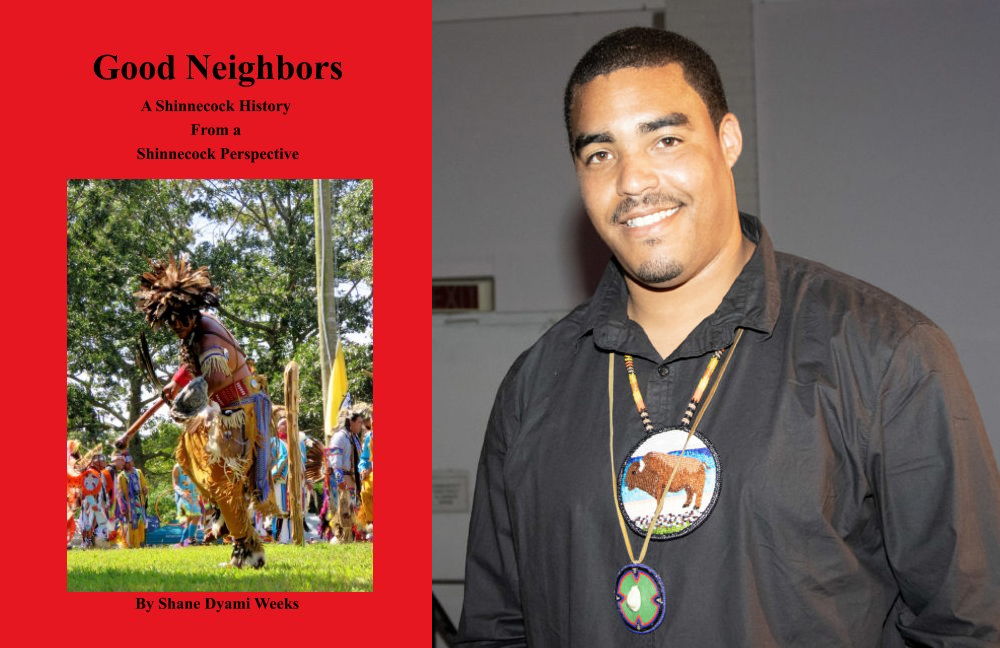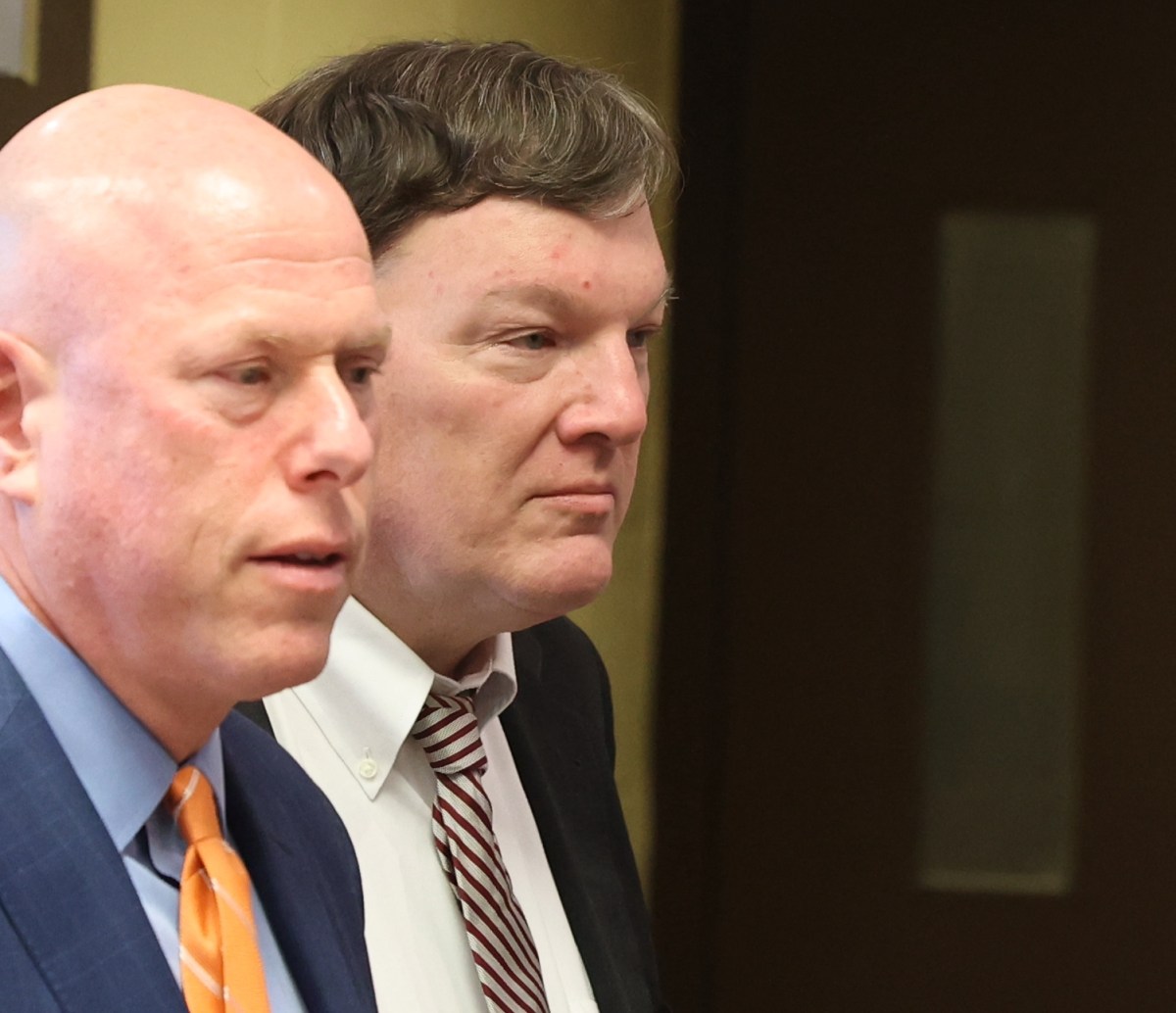Good Neighbors: Shane Weeks Pens History from Shinnecock Perspective

For many years, Shane Weeks of the Shinnecock Nation has worked to bridge the gap between his community and those unfamiliar with its history and culture, and in March 2022, he took a major step toward that goal with the release of his debut book Good Neighbors: A Shinnecock History From a Shinnecock Perspective. A lifelong dream that began to materialize in 2017, Good Neighbors is a long awaited exploration of local history through a Shinnecock lens and a primer on this Indigenous nation’s rich culture and traditions.
We spoke to Weeks about the need for a book like Good Neighbors to exist, who he hopes the book will reach and its potential as a resource for local school districts.
Was there a specific moment that inspired you to write Good Neighbors, or was it something you had always hoped to accomplish someday?
Ever since I was child, I’d always thought that I wanted to write a book called “Good Neighbors.” That is the perfect name for a book on Shinnecock. Where that term comes from is, when I was a kid, our elders would always say we have to be good neighbors in order for our way of life to survive, even just a little bit. Their traditional way of life was so oppressed — it was outlawed in the United States and Canada for us to speak our languages and practice our culture — so at some point they thought it was the best decision to discontinue those practices out of safety for themselves and future generations. I always heard that, and as I was growing up, it became very important to me to understand who we were as Shinnecock people, who we are still as Shinnecock people, understanding our history and uncovering the fact that our traditions, our way of life, our language, our practices weren’t necessarily lost, as a lot of our elders also said. They just went underground, they were just forgotten, and a lot of those things were still there.
I began doing a lot of research. … In that, I realized that almost all of the accounts of Shinnecock people were never documented through the eyes of a Shinnecock person. It was always third-person, always the accounts of what somebody thought they were seeing, never our own voices saying what it is that we really are doing or who we are. I felt it was important to write this book as I began to understand our history as I knew it, and understand that those documents where our own people talk about our own history are still very rare, even today. And I wanted to have a foundation for future generations to look back on in terms of their own history.
How did you decide what facts, insights and opinions to include in the book?
A big part of that was that I always had in the back of my mind as I was writing the book that I wanted to include things that I wish I had found in my research. If somebody looks at this 150 years from now, I wanted to include things that would lead them to other answers and to further understanding, to have it all in one place.
In our traditions we say we don’t always give everything in a teaching, we give just a little bit, just enough for somebody to be interested and do the work themselves. And so that’s kind of how I also wrote the book — to just give a little bit, just give leads here and there for people, today or in the future, to follow. Like, “Oh wow, that’s interesting. Let me look more into that. … Let me find an elder and ask about this teaching. What teaching is he talking about there?” To not give the entire description right then and there, we’re meant to work for our teachings, that’s our way. So that was a lot of how I came to those topics.
I wanted to talk about life on Shinnecock, because that’s something that’s non-existent if you go back 100, 200, 300 years ago in documentation, there’s nobody really talking about a first-person account of what people were doing on Shinnecock growing up as adults, as children. I wanted to include that, and I wanted to include a bit about the way I understand our history — those documents that I looked into and how that compares to oral tradition and things like that.
Who do you see as your target demographic for this book, and what do you hope they’ll gain from reading it?
The target demographic is really anybody who’s interested in learning about Shinnecock history. I see many people who are higher in age being very interested in our history, and also very young people — from all walks of life and all different backgrounds, races, professions — who are interested in understanding that the history that has been taught in public school districts and institutions have a very specific narrative and, a lot of times, a very false narrative. And again, I think people realize that they rarely hear our people talking about our understanding of ourselves. I’ve found that many different people are willing to listen.
I hope that, in the future, for non-Indigenous people it is a way for them to connect with us and better understand who we are and where we come from. For Indigenous people, I hope that it helps them understand who they are and where they come from as a Shinnecock person, because that’s how it helped me in my journey through life to understand who I was as a Shinnecock person, our history, our background.
Have you considered trying to get Good Neighbors added to Hamptons school reading lists to add a local Indigenous perspective to the textbook narrative?
I have not reached out to anybody yet about that happening. Several people have reached out to me about having it at different events — having talks, book signings — but not necessarily the curriculum yet. But I think it would be great if that’s something school districts would be inclined to see. I would love to have that as part of the local school district curriculum.
What did you find most rewarding about writing and publishing Good Neighbors?
I think that having a feeling of contributing to our future as Shinnecock people, just feeling that no matter how big or little, I was doing my part the best that I could. That feeling that somebody can look at this work in the future was very fulfilling to me.
To learn more about Good Neighbors and stay up to date with author events, visit bizhiki.com and follow @bizhiki_ on Instagram. The book is available as a soft cover or PDF on blurb.com.



